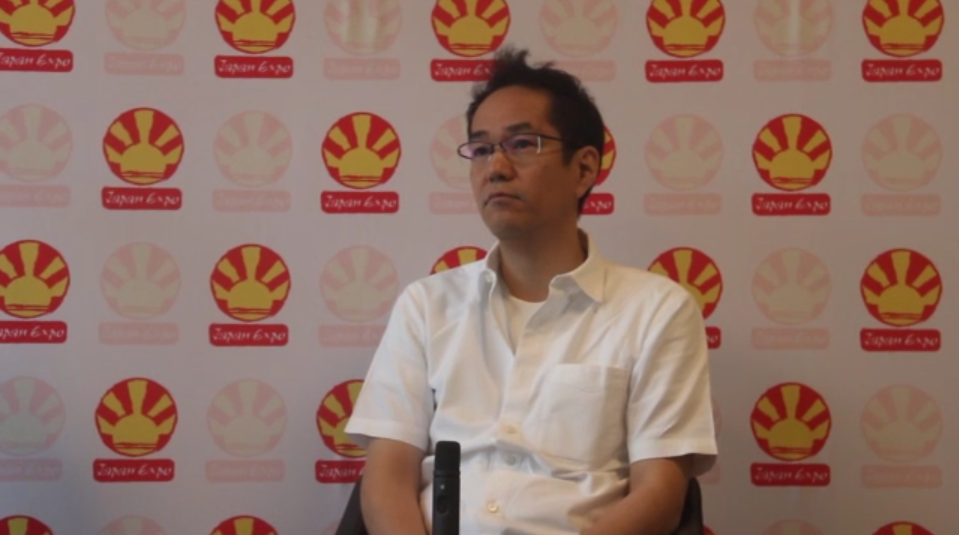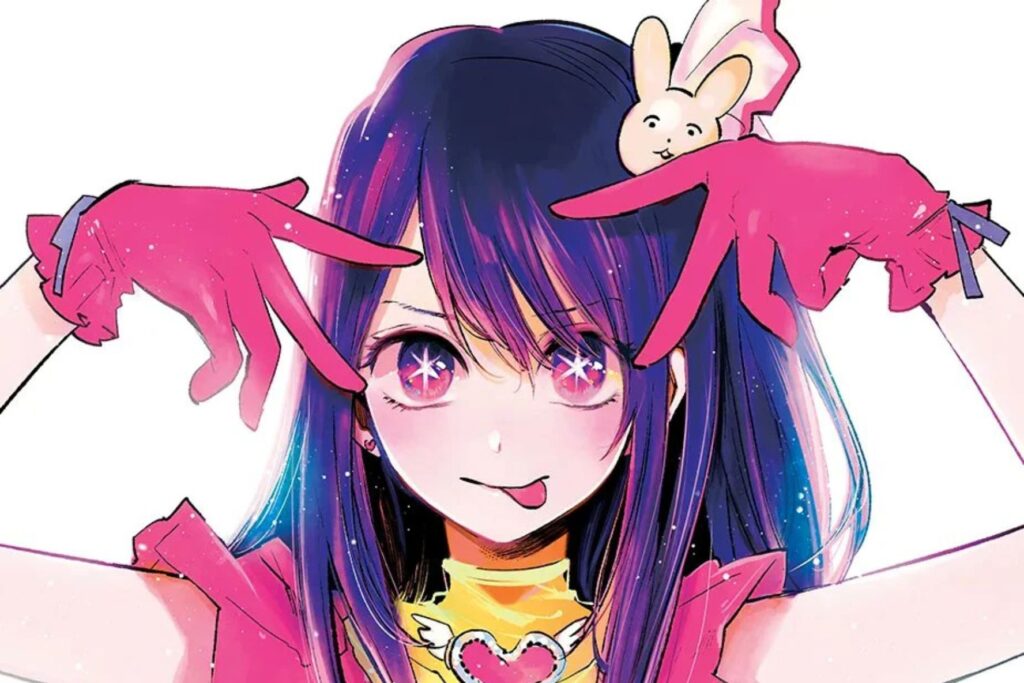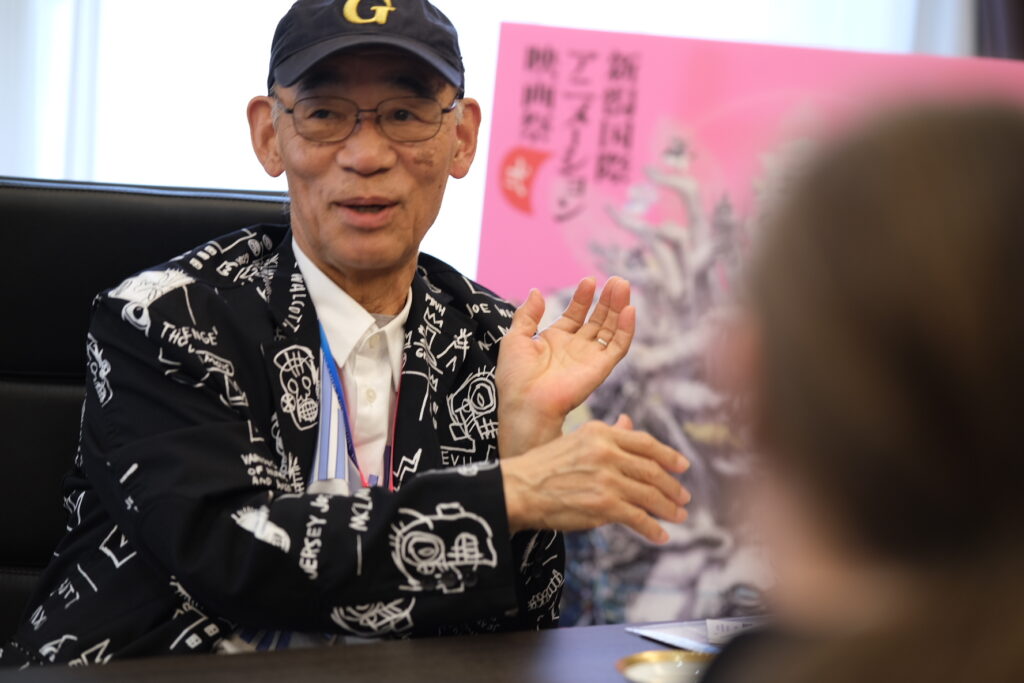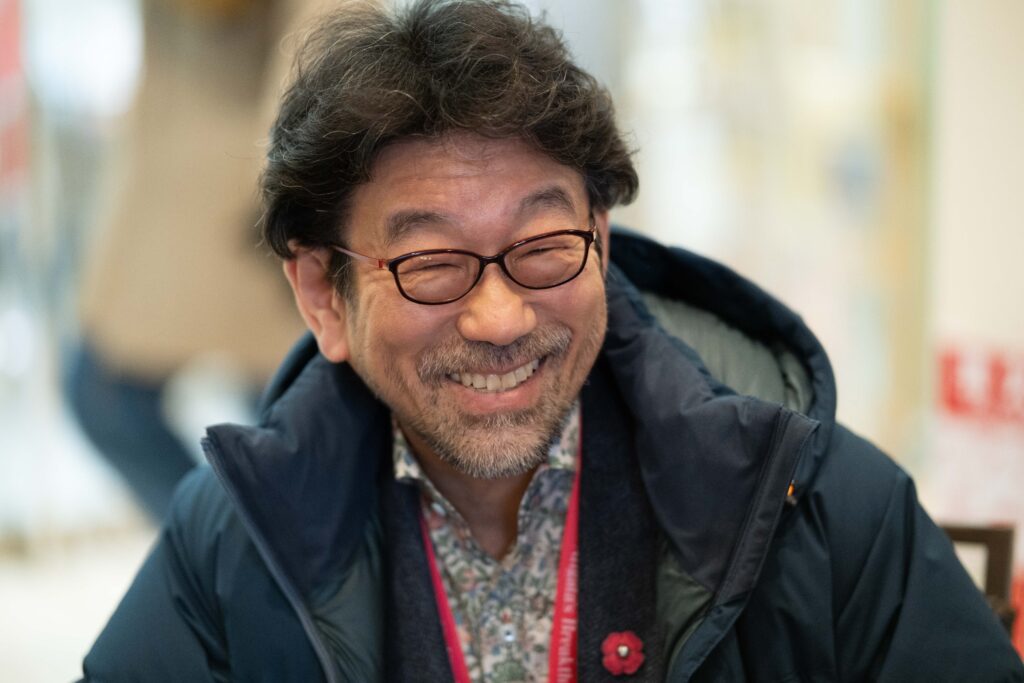In the summer of 2017, while Ghost in the Shell STAND ALONE COMPLEX director Kenji Kamiyama attended the Paris Japan Expo, we were able to meet with him and producer Yoshiki Sakurai for an interview.
M. Kamiyama is well known for his involvement in the Ghost in the Shell franchise has not only directed the two seasons of the STAND ALONE COMPLEX TV series but also Netflix’s Ghost in the Shell: SAC_2045 to be released in 2020. Meeting with him was a great occasion to ask him about his ties with Ghost in the Shell director Mamoru Oshii and his influence on M. Kamiyama’s career.
Like our content? Feel free to support us on Ko-Fi!
STAND ALONE COMPLEX’s society of digitalized information
Whistleblowers are among the central themes in Ghost in the Shell STAND ALONE COMPLEX. Since then, there have been the Snowden and Wikileaks cases. You someway foretold the future. What can you tell us about it?
Kenji KAMIYAMA: We didn’t write the show with the intent of anticipating the future of our society. However, networks were evolving at a fast pace at the time of the show’s production. At the time, we asked ourselves what would happen if the internet kept growing. Rather than anticipating the future, we tried to rethink reality, capturing this society of computerized information. This inspiration during production ended up looking like a foresight. We described future events quite accurately. It was a really strange experience for us.
It is said that you took a lot of inspiration from the Glico Morinaga case, but it ended up resembling much more to the Julien Assange incident.
K. KAMIYAMA: While working on STAND ALONE COMPLEX, the Wikileaks incident hadn’t occurred yet. It was a strange feeling to have created a work that would predict the future.
What do you think of Wikileaks?
K. KAMIYAMA: When we conceived the meaning behind the expression “STAND ALONE COMPLEX,” I feel like they come close to what we had in mind.
Do you support them?
K. KAMIYAMA: If I’m not personally affected, then I think their existence is very interesting.
The Oshiijuku
I want to ask you about your relationship with director Mamoru Oshii. Do you consider him to be someone who has trained you as a director, and to what extent has he influenced your working process?
K. KAMIYAMA: I have never worked with Mamoru Oshii, so I can’t say I have learned anything from him from a technical standpoint. Regardless, he’s a director I have always greatly respected even before I met him. I used to study his works and analyze everything he did. One day he set up a workshop to teach people how to create a project. I took part in this workshop where every participant had to submit a project. In my project, I tried to include what I thought of his works. When Mamoru Oshii read it, he could feel it wasn’t just a movie project and that there was much more to it. This project led to many discussions with Mr. Oshii, from which I learned a lot, mainly about dramatic art and how to include philosophy in works.
Could you tell us more about the Oshiijuku? How many participants were you and how long did it last?
K. KAMIYAMA: So there are people who know about Oshiijuku even in France. On the internet, people are talking about Oshiijuku, but they’re describing it as more than what it was. It wasn’t a workshop aiming at teaching directing to young people at all. More so it was for young people working in production who were too busy with their daily lives, he held this workshop to teach them how to start a project, how to present this project, how to pitch it. It was about training producers.
There were stringent rules at this workshop. The first one was that one had to work on their project outside work hours. The second one was that there was no budget, so if you wanted to ask an illustrator to draw concept art, you had to pay for that by yourself. The third rule was that if you did not respect the topic or that you were late submitting the project, you’d get immediately kicked out.
The workshop lasted for a month. We would meet once every week, and each time Oshii would give a topic. At the end of the workshop, we were only four people left.
Can you tell us about the “survivors”?
K. KAMIYAMA: There was me, Fujisaku Junichi, who is a screenwriter at Production IG; he’s also the director of Blood+. Then there also was Arakawa Masatsugu; he did Colorful Ninja Iromaki. He draws unique characters. And then there was… I forgot about the last one. Anyway, there were these three people left. I had suggested the project Blood: The Last Vampire, which we carried out. Kitakubo Hiroyuki directed the movie, but he joined in after the workshop. I was in charge of screenwriting for this movie.
Eden of the East and outcasts
In Eden of the East, you depicted Hikikomori and NEETs, who are not good enough for society. What do you think of this Japanese society which does not have room for people who do not conform to her norms?
K. KAMIYAMA: In Eden of the East, I showed the youth of that time who are now around 25 and 30 years old. Now there is a new youth who doesn’t even feel excluded from society. They don’t feel marginalized; according to them, they are not a minority. At the time of the show’s broadcast, these were people who felt excluded, who felt like a minority. The next generation created a community, and because they feel like they belong in a community, they don’t feel the need to be accepted by society. Neither do they consider themselves shut-in or Hikikomori. I think we can say that youth has evolved in some way.
How did you end up working with the mangaka Umino Chica on this show?
K. KAMIYAMA: First of all, the show was broadcast on the Noitamina program. The animes on this program seek to be appealing even to audiences who do not usually watch anime. The first anime which was broadcast on Noitamina was the adaptation of Umino Chica’s manga Honey & Clover. Because Eden of the East was the first original anime on Noitamina, I wanted to celebrate by having a link to the first show it broadcasted. Hence why I called Ms. Umino to work on the show.
The other reason is that I am acquainted with Ms. Umino. It’s difficult to ask an author to work on a show because they tend to work on their own manga. But because I have this privileged relationship, I was able to ask her directly if she would work with me.
On Napping Princess, you worked with the French artist Christophe Ferreira who was trained by Yasuo Otsuka. How did you meet him, and how was it working with him?
K. KAMIYAMA: It’s Mr. Sakurai who knew Christophe and asked him to work on the movie. I will let Mr. Sakurai answer the question.
Yoshiki SAKURAI: Napping Princess is the first original feature film directed by Mr. Kamiyama. When we started working on it, we did not have appointed any designers yet. I wanted to leave the creative process open to as many possibilities as I could. This is why we had not chosen any designers. Seven people submitted concept arts. I met Christophe through Facebook. I saw his drawings on Facebook, and I felt that his pictures were very different from Mr. Kamiyama’s world. I thought to myself that it would be interesting to have them work together. I submitted the idea to Mr. Kamiyama, and he agreed to it. Mr. Kamiyama isn’t the kind of person who orders people around. He prefers teamwork, having people think altogether. So working with him is not just about drawing well; it’s also about wanting to work this way, brainstorming together. Christophe fitted very well in this dynamic.
Interview by JOYET Ludovic, SERAKI Dimitri, and BASTIE Arnaud
Like our content? Feel free to support us on Ko-Fi!
You might also be interested in
Oshi no Ko & (Mis)Communication – Short Interview with Aka Akasaka and Mengo Yokoyari
The Oshi no Ko manga, which recently ended its publication, was created through the association of two successful authors, Aka Akasaka, mangaka of the hit love comedy Kaguya-sama: Love Is War, and Mengo Yokoyari, creator of Scum's Wish. During their visit at the...
Ideon is the Ego’s death – Yoshiyuki Tomino Interview [Niigata International Animation Film Festival 2024]
Yoshiyuki Tomino is, without any doubt, one of the most famous and important directors in anime history. Not just one of the creators of Gundam, he is an incredibly prolific creator whose work impacted both robot anime and science-fiction in general. It was during...
“Film festivals are about meetings and discoveries” – Interview with Tarô Maki, Niigata International Animation Film Festival General Producer
As the representative director of planning company Genco, Tarô Maki has been a major figure in the Japanese animation industry for decades. This is due in no part to his role as a producer on some of anime’s greatest successes, notably in the theaters, with films...





Recent Comments